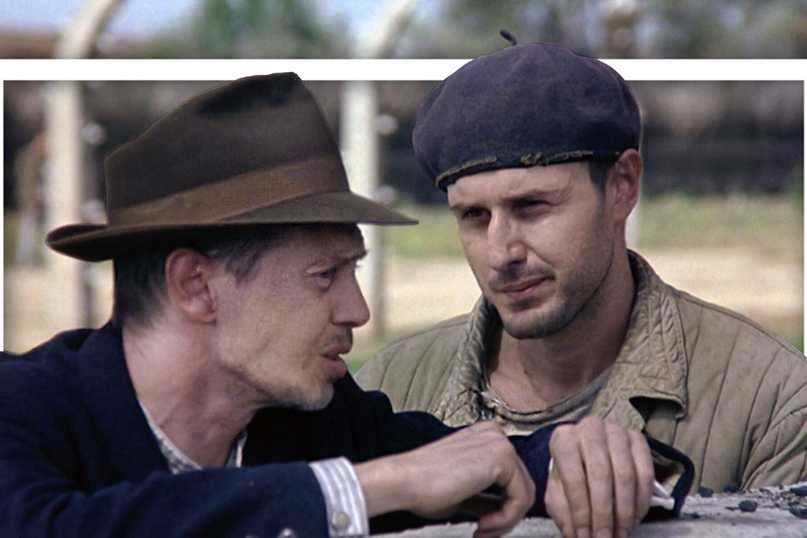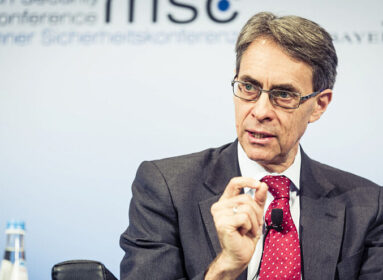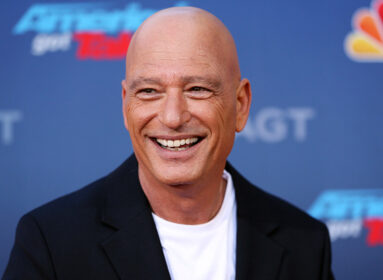
The greatest Holocaust movie ever made, starring Steve Buscemi, debuted on 9/11. It’s time to revisit it.
By Rich Brownstein
(JTA) — On Sept. 11, 2001, the greatest Holocaust film ever made, before or since, premiered at a festival — and quickly disappeared, largely unnoticed.
The film’s cast included Steve Buscemi, Harvey Keitel, David Arquette, Michael Stuhlbarg and Mira Sorvino, and it was written and directed by the acclaimed Jewish actor Tim Blake Nelson. Roger Ebert called it one of the best films of the year; later, he added it to his prestigious Great Movies series. The film was so extraordinary that Steven Spielberg considered distributing it himself, less than a decade after making “Schindler’s List.”
This was the astonishing pedigree and support behind “The Grey Zone.” But it couldn’t translate into any attention for the beleaguered film, which had a quickly-forgotten premiere at the Toronto International Film Festival and languished at the box office when it was released the next year.
“The Grey Zone” is not about righteous gentiles or good Nazis who redeem themselves by saving Jews. It’s not a happy-go-lucky film with a father and son prancing around Auschwitz playing games, or a cartoonish Adolf Hitler mugging for the camera. It lacks the other typical trappings of Holocaust movies: the lush musical score, the tortured accents, the melodramatic misdirections. “The Grey Zone” is, instead, about the moral and philosophical conundrums faced by the Sonderkommando: the Jews in the death camps who worked to dispose of the victims’ bodies in exchange for slightly better treatment from the Nazis.
Drawing on the writings of Primo Levi and the true story of the forgotten rebellion at Birkenau by the Sonderkommando in 1944, where the Jewish workers destroyed two of the main four crematorium complexes on the deadliest spot in human history, Nelson portrays real people living their reality — not with black or white choices, but with grey moral choices. And “The Grey Zone” tells its complex, layered story in an economical 108 minutes, with grace and humility.
How did such an important film fall through the cracks? “The Grey Zone” was practically stillborn, set to premiere just after the attacks on the World Trade Center and the Pentagon, while smoke was still rising from lower Manhattan. Yet even if the film’s release date had not itself been cataclysmic, it was still made by Nelson — best known at the time for playing a buffoonish ex-con in “O Brother, Where Art Thou?” — and starring a cast of American actors not known for weighty dramatic performances. Even though Nelson, basing the film on his own play of the same name, was himself the son of a Holocaust refugee and had traveled to Dachau and Auschwitz for research, he’d hardly seemed like the kind of filmmaker to pay the Holocaust sufficient reverence.
In the 20 years since the film’s release, it has come to seem oddly prescient in the world of Holocaust cinema. More and more often, dramatizations of the Shoah, including Roman Polanski’s “The Pianist” favor more unsparing, morally complicated depictions of Holocaust victims. And in 2015, the Hungarian film “Son of Saul” drew from much of the same plot and setting as “The Grey Zone” for its own depiction of the Sonderkommando; that movie won the Best Foreign-Language Film Oscar, while its forebear suffered the fate of most pioneers, alone and forgotten.
Nevertheless, Nelson remains proud of his contribution to Holocaust cinema. “There’s nothing I’ve done that’s more important to me than ‘The Grey Zone,’” he told JTA in a recent interview.
Nelson sat down with JTA for an interview to discuss the film’s 20th anniversary.
JTA: Talk about growing up as a Jewish kid in 1970s Tulsa, Oklahoma.
Nelson: I’ve described it before as strangely exotic. Being a European Jew in Tulsa, the son of a Holocaust refugee, we were obviously different. I feel like I got the best of both worlds. I got to grow up as a Jew, celebrating Passover at my grandparents’ house on plates and silverware that somehow they brought over from Germany — yet in Oklahoma, which is also unique. And that combination gave me a level of intimacy and distance that has really served me well in my life.
How much of the Birkenau revolt in “The Grey Zone” was fictional?
Almost none of the core plot was fiction. “The Grey Zone” was based mostly on “Amidst a Nightmare of Crime: Manuscripts of Prisoners in Crematorium Squads Found at Auschwitz,” as well as Dr. Miklós Nyiszli’s “Auschwitz: A Doctor’s Eyewitness Account” and, of course, Primo Levi’s “The Drowned And The Saved,” a chapter of which provided the film’s name. The film was also heavily influenced by André Schwarz-Bart’s novel “The Last of the Just,” and the memoirs of both Dario Gabai and Filip Muller.
Did you go to the camps in preparation for making “The Grey Zone”?
I went to Dachau and Auschwitz to write “The Grey Zone” play, which was performed in New York several years earlier. And we had the architectural plans from the London War Museum, so we were able to make exact replicas of two of the crematoria, which were ultimately destroyed in the 1944 uprising.
Interestingly, just a few years ago, I went back to Auschwitz with my son Henry. After the tour, in the Birkenau gift shop, I pointed and said, “Look Henry, they have ‘The Grey Zone’ DVD.” The cashier jumped in and said, “That’s the best Holocaust movie anybody has ever made.” I paid for the postcard and left without telling him that it was my movie.
What parts of the killing process did you represent in the film?
Over the course of the movie, you get every single aspect of the victim’s journey to death — actually up into the clouds, because at the end we see smoke and ash rising. It’s not all in order, but you get every single part of the killing apparatus from the train to the oven except for one: there was no way I was going to shoot inside the gas chamber during the gassing. We show Germans pouring in the Zyklon B [from] the roof, and you hear the screaming.
We did have a shot inside the gas chamber right after, just a mass of dead bodies against the wall. But it was too much, too gruesomely real in an almost pornographic way. Fortunately, we were in a position not to have to use it in edit.
You were working as an actor for Steven Spielberg while you were editing “The Grey Zone.” Did he see your movie?
I was acting in “Minority Report” and we got along very well and still do. And I said to him on set, “Look, I just made this Holocaust film. Would you take a look?” And so I got him the workprint. It wasn’t even the finished film. Steven watched it in his screening room over the weekend. And he said, “This is incredible. I love it. Look, I want to consider putting it out through DreamWorks.” So he showed it to his executives, who told him two things: “We’re not in the business of putting out films that are on a maximum of maybe only 750 screens, and it’s always going to be compared to ‘Schindler’s List’, sometimes favorably and probably mostly not favorably, so we don’t see it for DreamWorks.” So we took it to Lionsgate, who distributed it. So, yes, Steven loved the film and has always been supportive.
Why were the film’s characters flawed, unlike Jewish victims in most other Holocaust film?
Primo Levi’s breathtaking implication about the Sonderkommandos, who extended their lives through some level of participation, was that Levi couldn’t claim he would’ve done differently. And so, that to me was almost a command that the characters needed to be inherently flawed, like you and me. I identify with every one of the Jews in the film on a really personal level. And even though each character is very different from one another, they had conversations that I think most people would have when confronting their same predicament: either work in the gas chambers and fill the ovens or die in them.
What was the impact of 9/11 on the release?
I literally woke up on the morning of Sept. 11, 2001 to a review in the Toronto Star that was exactly what we wanted. The critic really got the movie. I was supposed to have breakfast with Roger Ebert that morning. Before breakfast, I went on this radio show and that guy was rhapsodic about the movie. And it was to premiere that night. The night of Sept. 11. And I was sitting there on this radio show thinking, “My God, people get the movie. They’re appreciating it. All the risks that we took are being vindicated.”
And [I] looked up, and news footage showed the planes crashing into the buildings. And of course, that started with the understandable cancelation of our premiere that night.
How does “The Grey Zone” rank in your professional career?
There’s nothing I’ve done that’s more important to me than “The Grey Zone,” and it doesn’t matter that most people have never even heard of it.
“The Grey Zone” is currently available to stream for free on Amazon Prime, IMDB TV and Tubi, and for rental from various VOD services.
Rich Brownstein is a lecturer for Yad Vashem’s International School for Holocaust Studies and the author of “Holocaust Cinema Complete: A History and Analysis of 400 Films, with a Teaching Guide.”
Main Photo: Steve Buscemi and David Arquette in “The Grey Zone.” (Screenshot via Lionsgate Entertainment; Photo illustration by Grace Yagel)







 Southern New England Jewish Ledger
Southern New England Jewish Ledger















